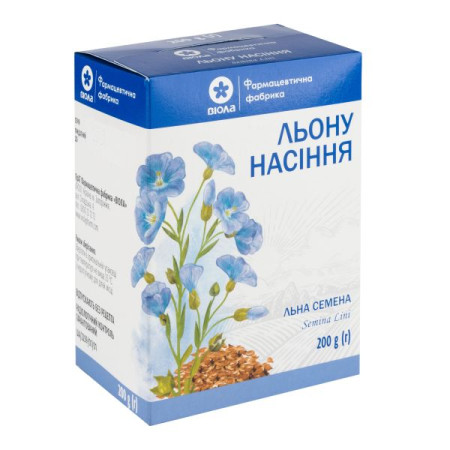Mixtard 30 NM flexpen suspension for injection 100 U/ml cartridge 3 ml multidose disposable in syringe pen No. 5

Suspension for injection "Mixtard ® 30 NM FlexPen ®" is used in the treatment of diabetes mellitus.
Composition
The active substance is human insulin (rDNA).
1 ml of suspension for injection contains 100 IU of human biosynthetic insulin (recombinant DNA obtained from Saccharomyces cerevisiae).
One IU (international unit) is equal to 0.035 mg of anhydrous human insulin.
One multidose disposable syringe pen contains 3 ml of suspension for injection, equivalent to 300 U.
"Mixtard ® 30 NM FlexPen ®" is a mixture of soluble insulin and isophane insulin (NPH), which contains 30% soluble insulin and 70% isophane insulin.
Excipients: zinc chloride; glycerol; metacresol; phenol; sodium hydrogen phosphate, dihydrate; sodium hydroxide (for pH adjustment); diluted hydrochloric acid (for pH adjustment); protamine sulfate; water for injections.
Contraindication
Hypersensitivity to human insulin or to any ingredient of the drug; hypoglycemia.Method of application
Mixtard ® 30 NM FlexPen ® is a biphasic insulin. It consists of a short-acting insulin and a long-acting insulin. Biphasic insulin is usually administered once or twice a day when a rapid initial effect is required along with a subsequent longer-lasting effect.
The dosage of insulin is individual and is determined by the doctor according to the patient's needs.
The individual daily insulin requirement is usually 0.3 to 1.0 IU/kg/day. The daily insulin requirement may increase in patients with insulin resistance (e.g. during puberty or obesity) and decrease in patients with residual endogenous insulin production.
The injection should be given 30 minutes before a main or additional meal containing carbohydrates.
Introduction
Mixtard® 30 NM FlexPen® is intended for subcutaneous injection only. Insulin suspension is never administered intravenously.
"Mixtard ® 30 NM FlexPen ®" is usually injected under the skin of the thigh or the anterior abdominal wall. It can also be injected into the buttocks or deltoid muscle of the shoulder.
With subcutaneous injections into the anterior abdominal wall, insulin absorption occurs faster than when injected into other areas of the body.
Injecting into a retracted skin fold significantly reduces the risk of getting into the muscle.
After injection, the needle should remain under the skin for at least 6 seconds. This will ensure that the full dose is administered.
To reduce the risk of lipodystrophy, injection sites should always be changed, even within the same area of the body.
The pre-filled syringe pen "Mixtard ® 30 NM FlexPen ®" is intended for use with disposable needles "NovoFine ®" or "NovoTwist ®" up to 8 mm long.
The FlexPen ® syringe pen allows you to administer doses from 1 to 60 units in 1-unit increments.
Detailed instructions for the use of these medical devices should be followed.
Application features
Pregnant women
Since insulin does not cross the placental barrier, there are no restrictions on treating diabetes with insulin during pregnancy.
There are no restrictions on treatment with Mixtard® 30 NM FlexPen® during breastfeeding, as the treatment of the mother does not pose any risk to the child. However, it may be necessary to adjust the dose and diet for the mother.
Children
Biosynthetic human insulin preparations are effective and safe drugs for the treatment of diabetes mellitus in children and adolescents of different age groups. The daily insulin requirement in children and adolescents depends on the stage of the disease, body weight, age, diet, physical activity, degree of insulin resistance and dynamics of glycemia levels.
Drivers
The patient's reactions and ability to concentrate may be impaired during hypoglycemia. This may be a risk factor in situations where these abilities are of particular importance (e.g., driving a car or operating machinery).
Patients should be advised to take precautions to prevent hypoglycemia before driving. This is especially important for patients who have reduced or absent warning signs of hypoglycemia or who experience frequent episodes of hypoglycemia. In such circumstances, the appropriateness of driving should be considered.
Overdose
Although there is no specific concept of overdose for insulin, if doses that are too high compared to the patient's needs are used, hypoglycemia may develop in successive stages after its administration.
Mild hypoglycemia can be treated by taking glucose or sugary foods. Therefore, diabetics are advised to always carry some sugar-containing foods with them.
In the case of severe hypoglycemia, when the patient is unconscious, glucagon should be administered subcutaneously or intramuscularly (0.5 to 1.0 mg) by trained personnel. A healthcare professional may administer glucose to the patient. Glucose should also be administered if the patient does not respond to glucagon within 10 to 15 minutes.
After the patient regains consciousness, he should take foods containing carbohydrates to prevent relapse.
Side effects
The most common side effect of therapy is hypoglycemia.
Interaction
Insulin suspensions should not be mixed with infusion solutions.
Storage conditions
Keep the pen cap closed to protect from light.
After opening: use within 6 weeks. Do not refrigerate. Store at a temperature not exceeding 30°C.
Keep out of reach of children.
Shelf life - 2.5 years.
There are no reviews for this product.
There are no reviews for this product, be the first to leave your review.
No questions about this product, be the first and ask your question.







